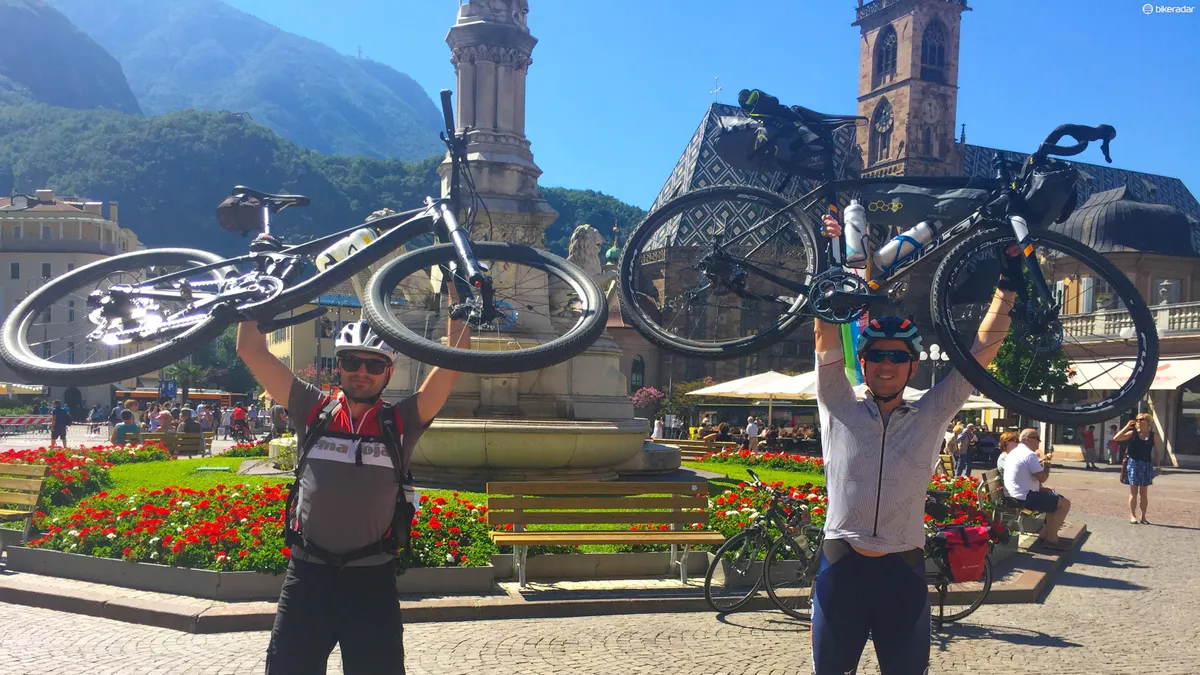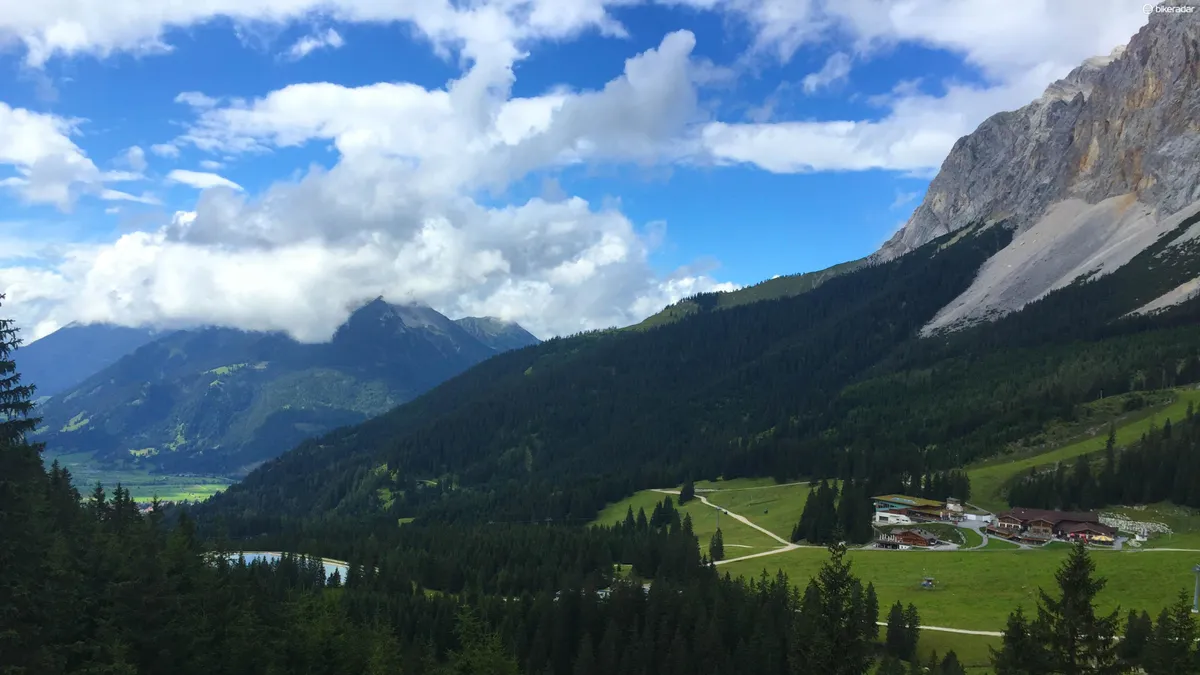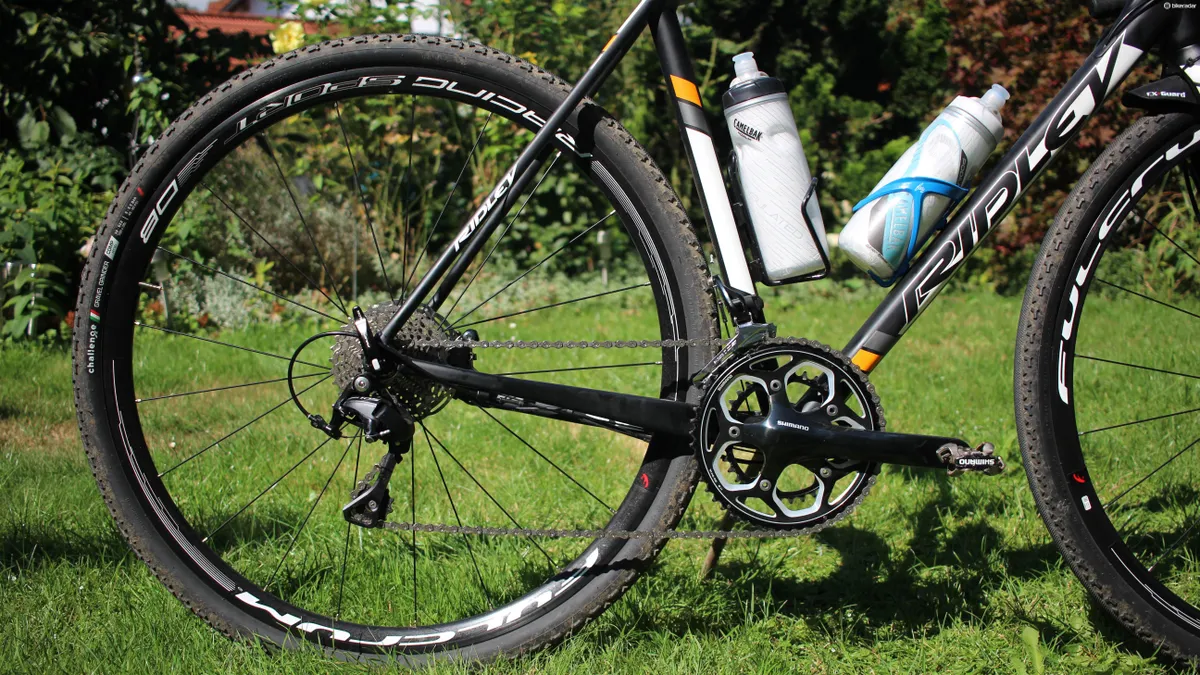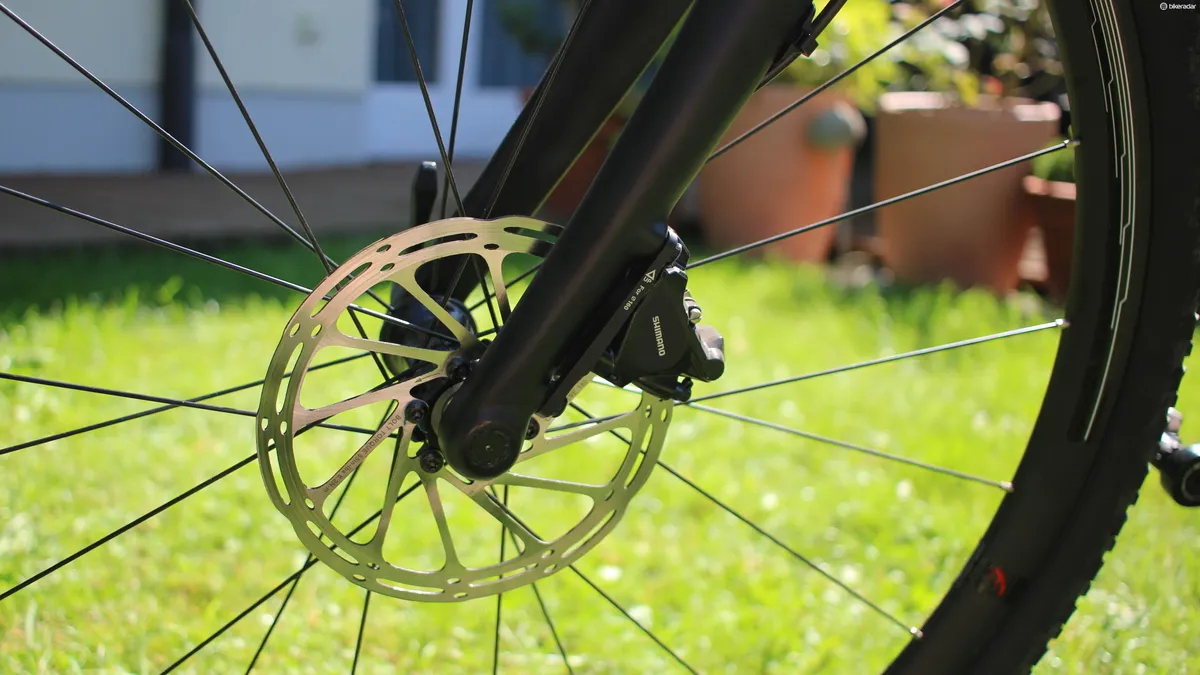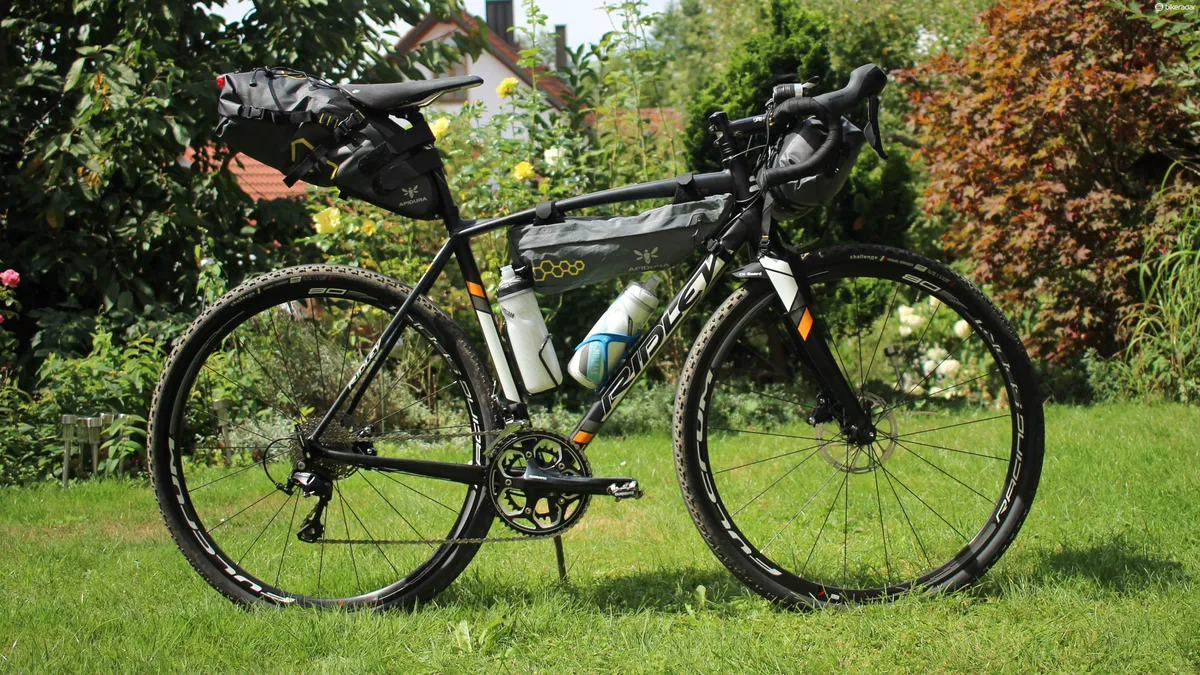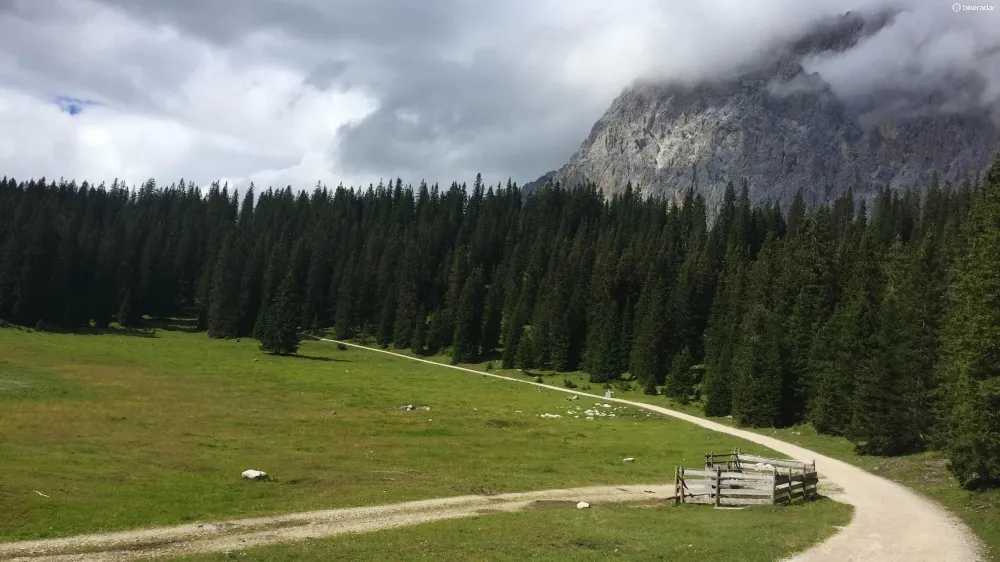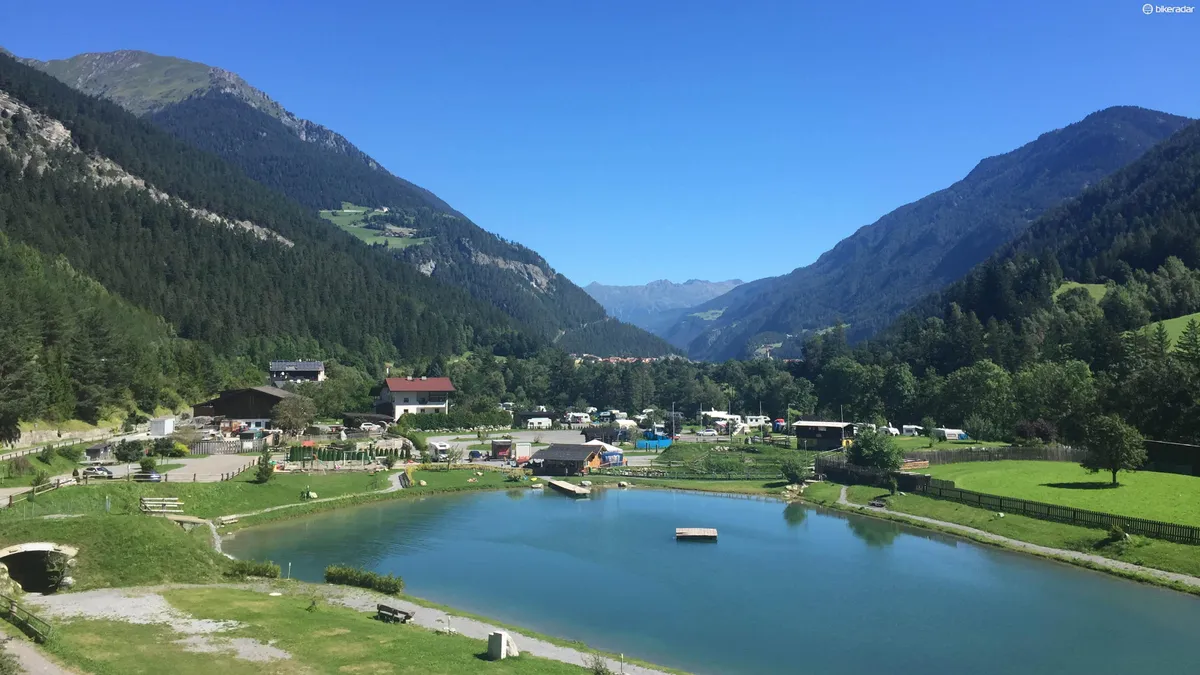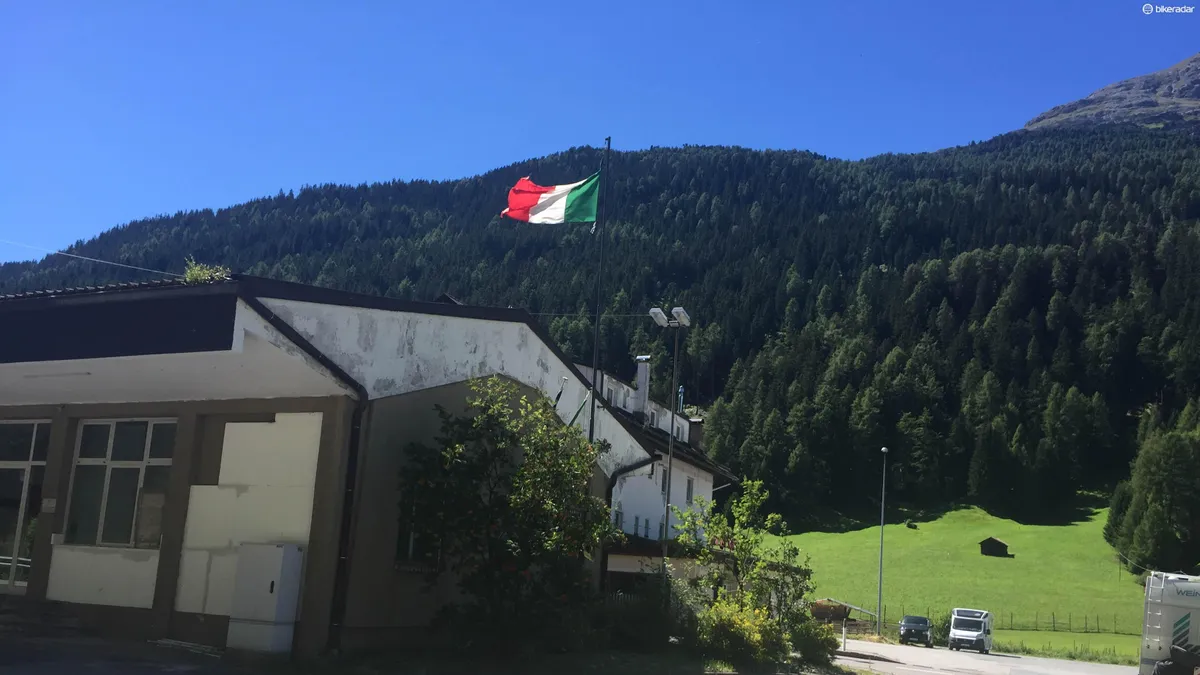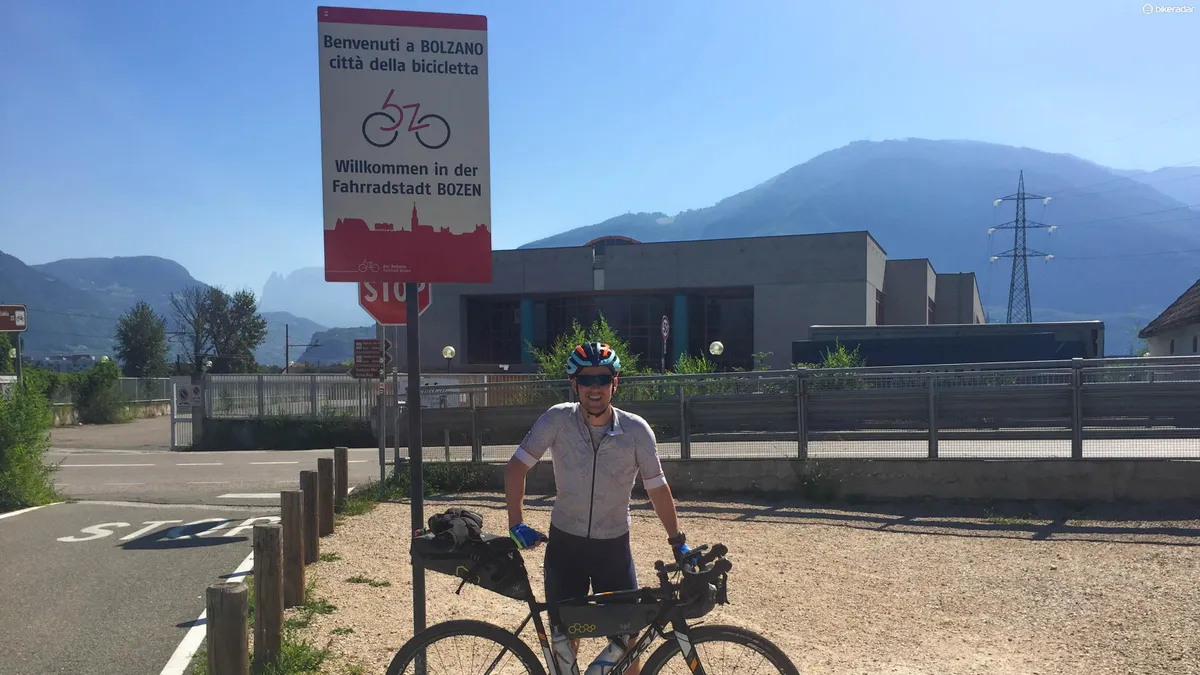For my 2016 bike touring adventure, I decided to go big: the Alps. Europe’s highest mountain range straddles eight countries and boasts some of the most stunning terrain anywhere on Earth. My riding buddy and I decided to travel from Bavaria in southern Germany down through Austria and into Italy’s South Tyrol region over the course of five days, finishing near Lake Garda. Spoiler alert: it’s bloody beautiful.
- Best touring bike: how to choose the right one for you
- Best gravel bike: 6 of the most popular
- 8 bike packing adventure tips
- The course: Around 300km of mountain roads and trails going south across the Alps, probably a mix of smooth tarmac, cycle paths and rough gravel tracks. We’d be avoiding busy roads as much as possible, and doing some light off-roading. For me, this was a step into the unknown.
- The equipment goal: A drop-bar bike that can cope with rough terrain, and is strong enough to carry me plus luggage. It must have gearing that's low enough to get me up some long, steep climbs, and powerful brakes to cope with coming down the other side. Shimano hydraulic disc brakes were my preference.
- The horse: A Ridley X-Trail A-20 gravel bike, with 38mm Challenge Gravel Grinder tyres, Shimano 105 drivetrain including a 50/34 compact crankset, and Shimano hydraulic disc brakes.
The Ridley X-Trail
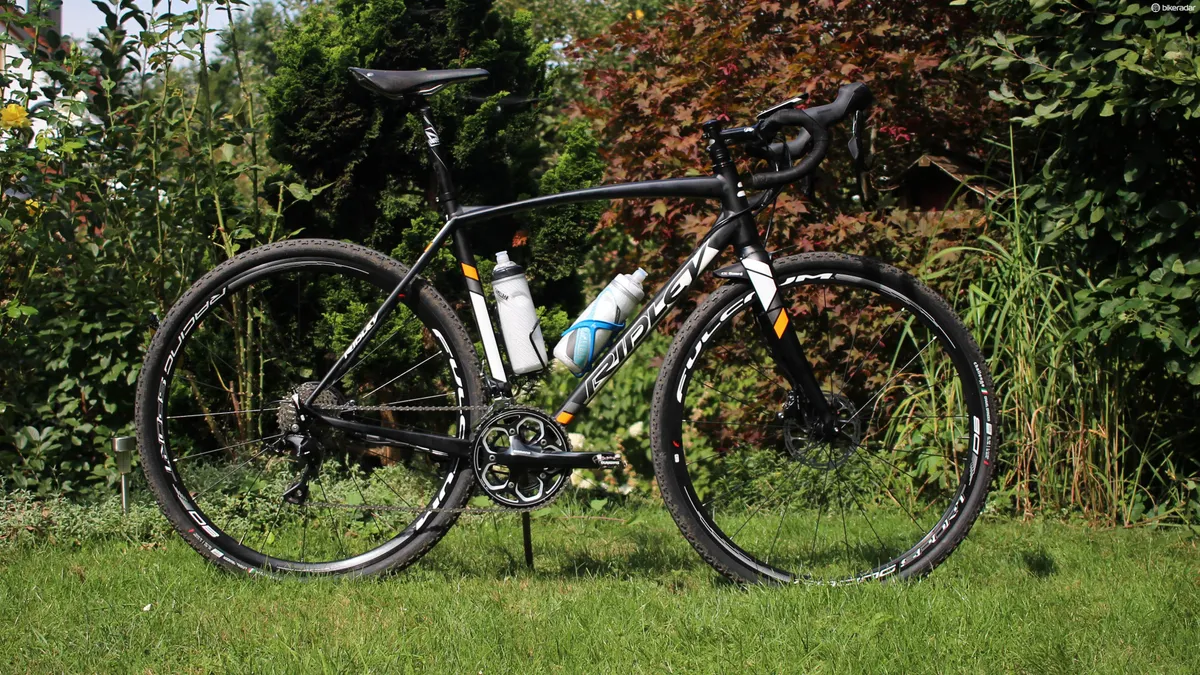
After dropping a line to the nice folks at bike distributor Madison, they agreed to loan me a Ridley X-Trail A20. For those unfamiliar with the Belgian bike brand’s range, the X-Trail is its do-it-all range of gravel/adventure models, combining road geometry with big tyre clearances and knobbly rubber.
This particular model sits towards the lower end of Ridley's X-Trail range and gets an alloy frame, rather than carbon.
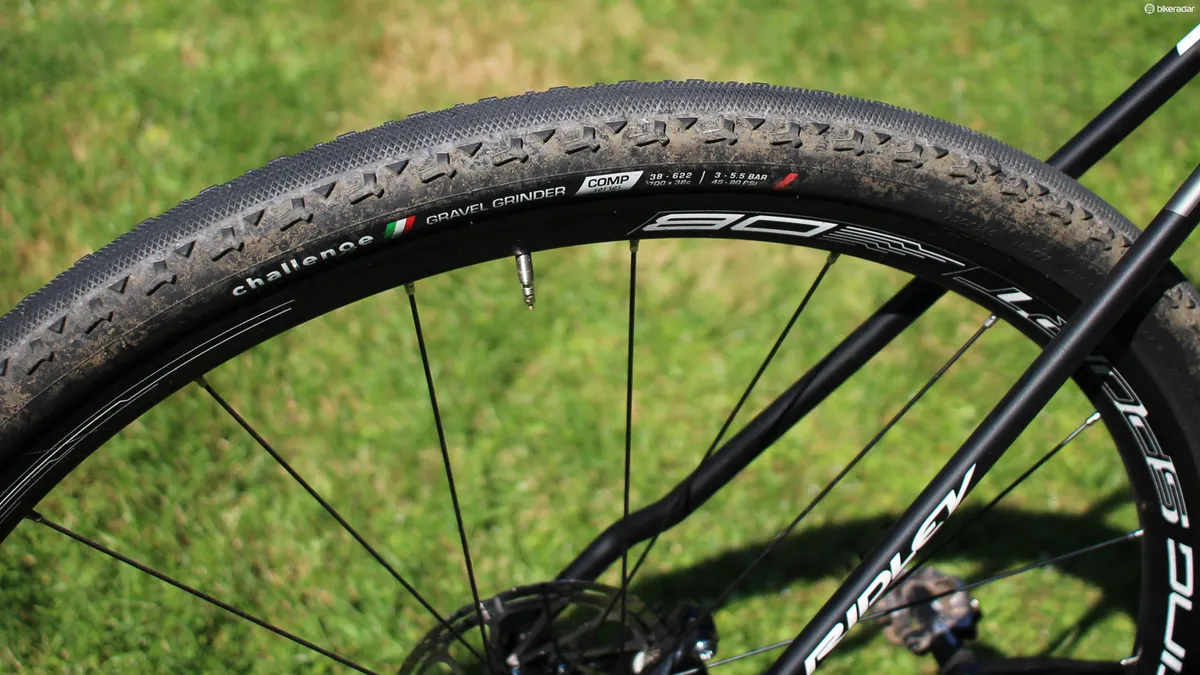
On paper though the components look solid: a mix of Shimano’s excellent 105 groupset, Fulcrum Racing 5DB wheels shod with Challenge Gravel Grinder 38mm tyres, and finishing kit from Ridley’s house brand 4ZA.
Importantly, the X-Trail A20 has low gearing for those long Alpine climbs (an 11-32t cassette is paired with a compact 50/34t crankset), and Shimano’s excellent hydraulic disc brakes, matched to SRAM rotors.
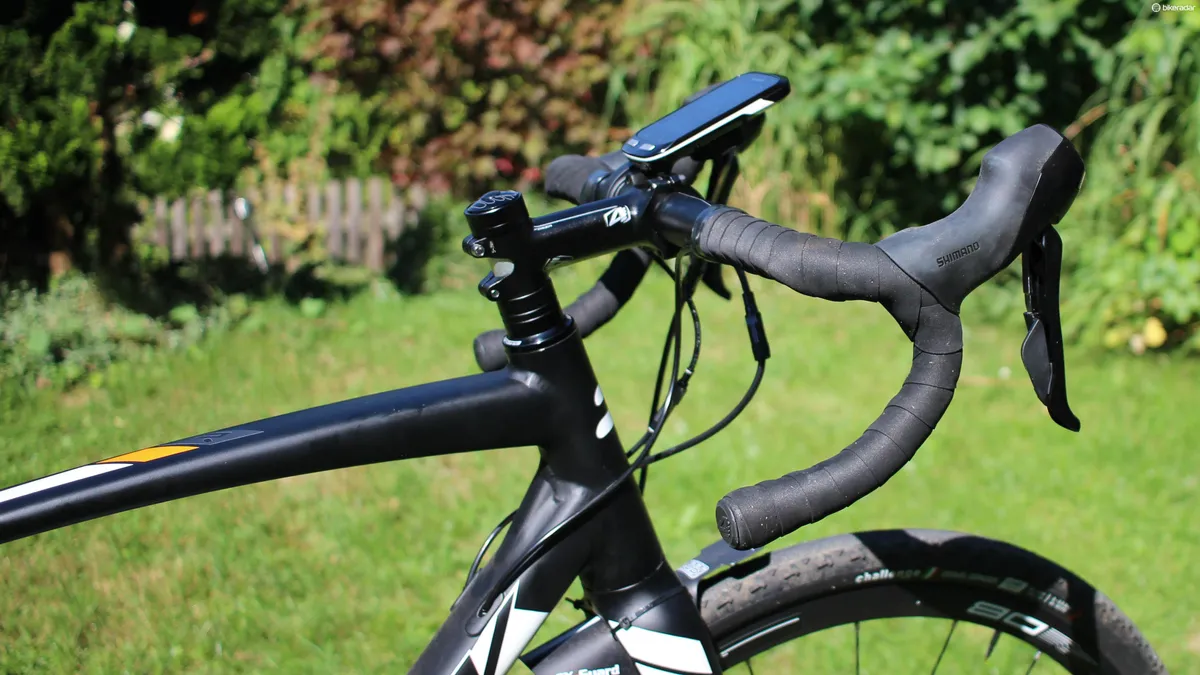
Good news, because I expected to do a lot of climbing and descending. The shifters/brake levers were Shimano’s RS505 units, which deliver excellent, affordable all-weather braking and shifting, but they’re a bit big around the hoods compared to the higher-spec R685 levers.
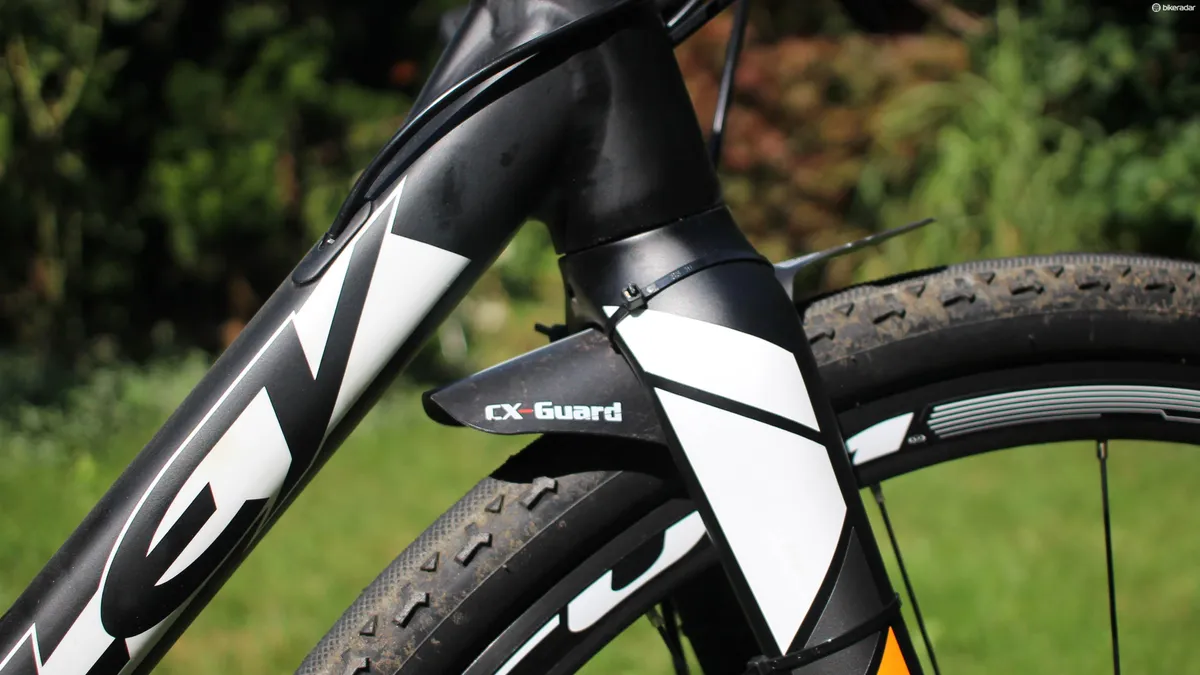
I did swap out the stock saddle for my own Brooks Cambium C17 Carved, as I hated the idea of being stuck with something I didn’t like. The handlebar tape seemed fine so no problems expected there, and I put on my old reliable Shimano SPDs, a Rapid Racer CX-Guard that our workshop manager lent me, and two bottle cages I keep lying around. I haven’t found a better bottle design than Camelbak Podium, but for this trip I used their Camelbak's Chill versions to keep things cool.
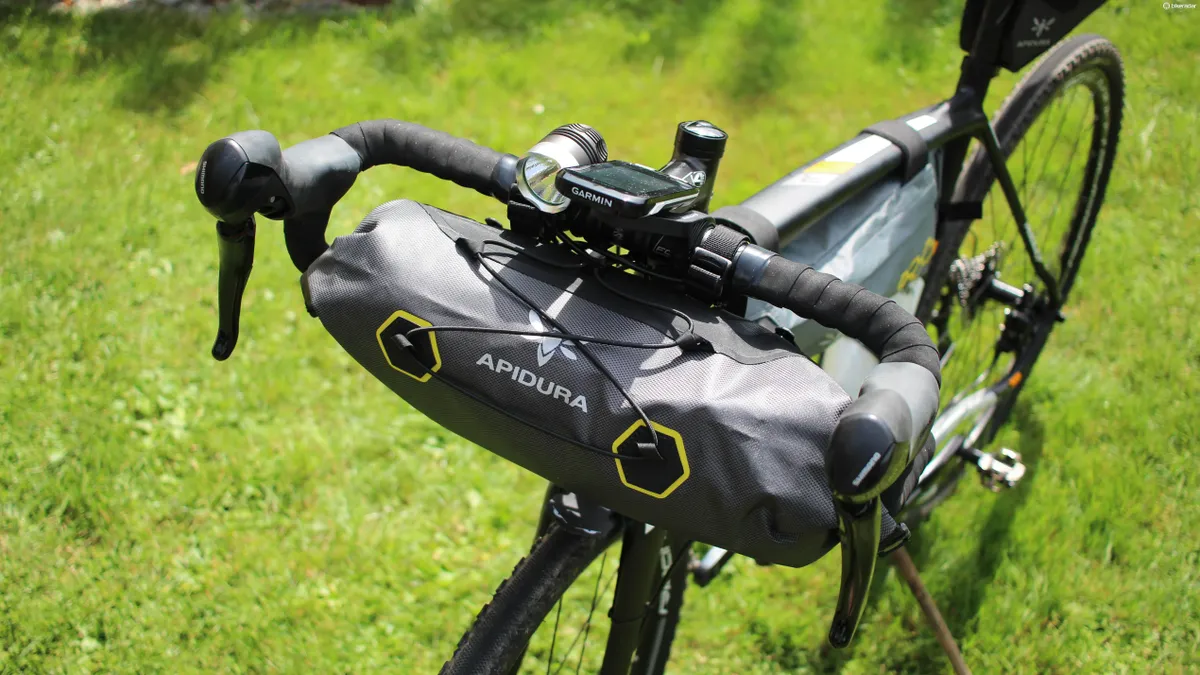
I’d been warned that we could encounter long tunnels along our route, so I fitted my powerful Cluson Engineering front light to the handlebars, sticking the external battery into the frame pack, and ziptied my regular Cateye commuting rear light to the saddle pack.
The baggage
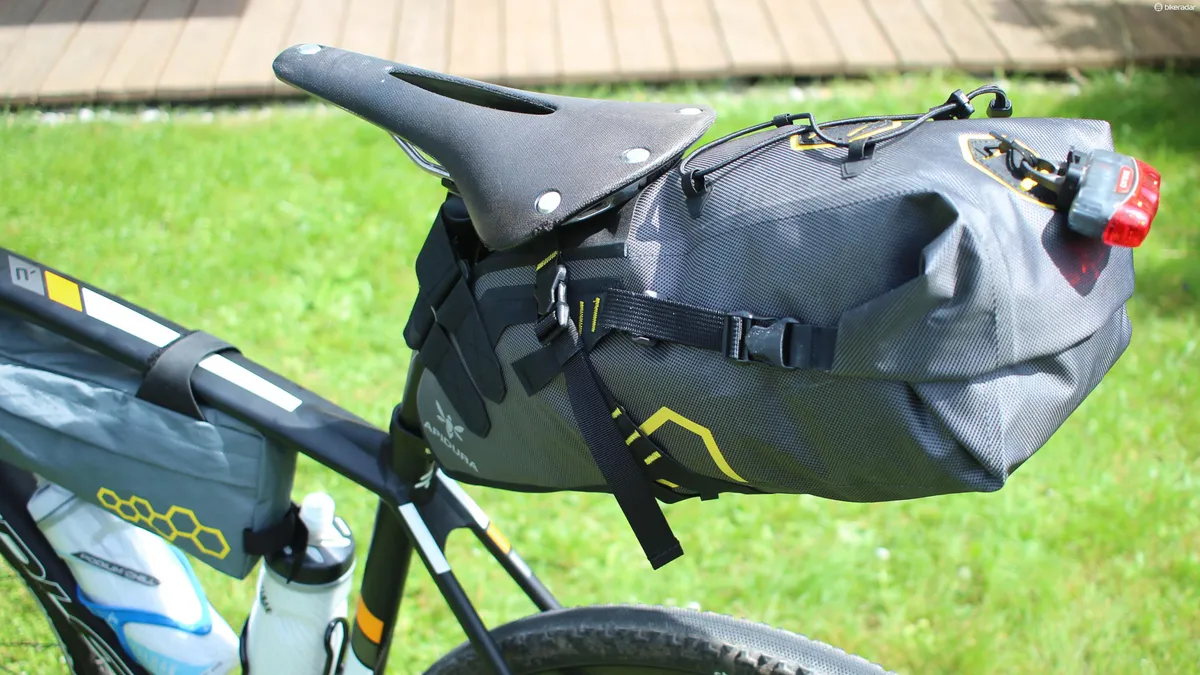
I decided to try something different this year: rather than use the tried-and-trusted bright yellow Ortlieb panniers, I requested a set of dry bags from British bike packing specialist Apidura. Apidura sent me a large saddle pack, small handlebar pack (I was worried about the larger model fitting between the drops), and a small frame pack. It all fitted perfectly, and meant I could dispense with a pannier rack too. We’d be staying in guesthouses, so no tent or sleeping equipment were needed.
Capacity of the combined Apidura bags was much less than the Ortlieb set-up I normally use for a week-long tour (which has 47 litres for the two panniers plus handlebar bag). My newly acquired Apidura saddle pack held 14 litres of gear, the handlebar pack nine litres and the small frame pack held three litres, giving me a total of 26 litres. I was going to have to learn to “pack light, travel far”, to borrow Rapha’s maxim.
Speaking of Rapha, I did consider requesting its Apidura edition bike packing range, but eventually decided that I wanted to go for maximum waterproofing. The Rapha packs look very nice, but they aren’t rated as waterproof, due to the stitching process used in their construction. Instead, you’re encouraged to keep any water-sensitive items in an internal dry bag. That’s a deal breaker for me, especially as I’m used to Ortlieb levels of impermeability.
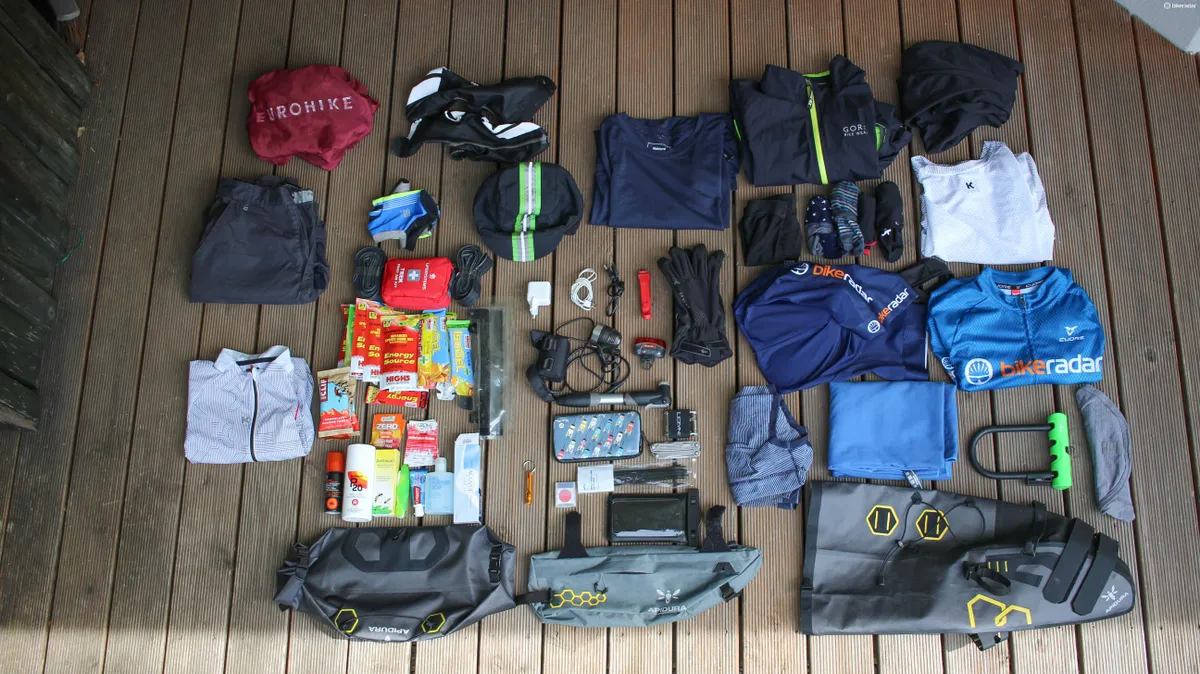
Once I had the bike and the bags, there was only one thing left to do: pack. For this trip, I divided my kit into three separate functions: clothing in the rear saddle pack, bike repair items and nutrition in the frame pack, and essentials like first-aid kit and toiletries in the handlebar bag. I managed to get it all in… just.
Apidura saddle pack contents
- Spare short-sleeve jersey (Katusha Beyond)
- Spare biblongs (Polaris)
- Winter gloves (SealSkinz)
- Winter riding hat (Vulpine)
- Spare riding socks
- Underpants x 2
- Lightweight casual shoes (Toms)
- Lightweight casual trousers (Craghoppers)
- Rapha winter collar
- Long-sleeve merino base layer (Finisterre Eddy)
- Overshoes (Endura)
- Stuff sack (knackered old Eurohike bag that’s been with me for 20 years)
- Mini D-lock (Abus)
- Travel towel (Lifeventure)
Apidura frame pack contents
- Energy gels x 7 (High5)
- Energy bars x 3 (Clif Bar)
- Recovery drink sachets x 2
- Spare inner tubes x 2
- Bike multitool (Crank Brothers)
- Camping multitool (Leatherman Wingman)
- Mini pump (Topeak)
- Puncture repair kit
- Zip ties
- Tyre levers
- Emergency whistle
Apidura handlebar bag contents
- Waterproof phone case
- Waterproof map case
- P20 sun screen (factor 50)
- Contact lenses
- Travel tooth brush
- Travel toothpaste
- Chamois cream sachets x 3
- Travel wash
- Insect repellent (Jungle Formula)
- Insect bite cream
- USB charger
- iPhone cable
- Garmin charging cable
Day 1: Bavarian beginnings
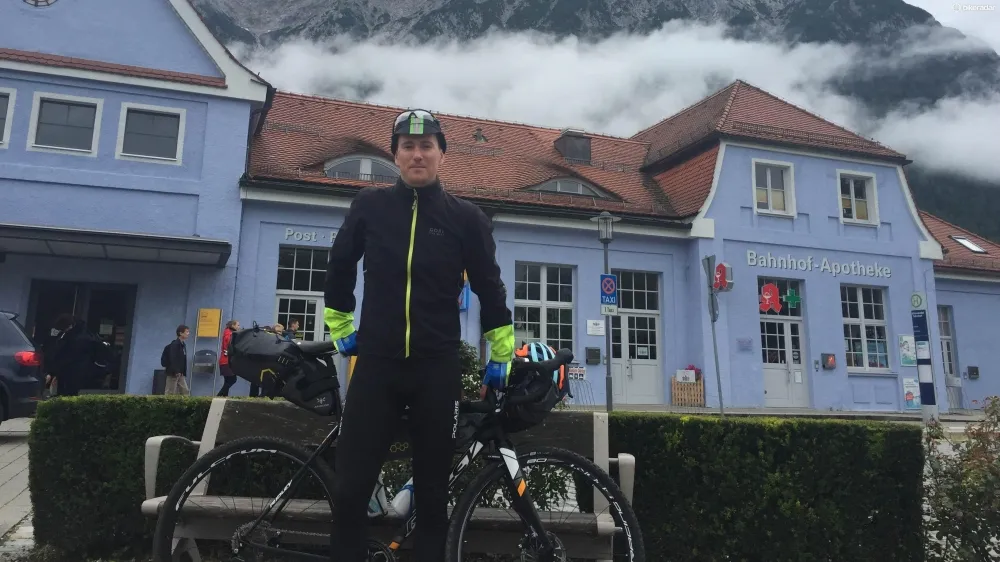
Our train left central Munich at dawn, heading due south for the mountains. Two hours later we alighted at the small town of Mittenwald (altitude 915m), less than 5km from the Austrian border. Some fine mist lingered, and snow was visible on peaks in the distance. It was cold up here compared to Munich. Time to put on the neck warmer and warm gloves.
I took some photos of my bike in front of the pastel-coloured train station with mountains looming in the background, and then we clipped in: time to go. Within half an hour we were at the border — the sign ‘Wilkommen in Österreich’ greeted us, bearing the Austrian flag’s eagle emblem — and we passed through without seeing a single border guard.
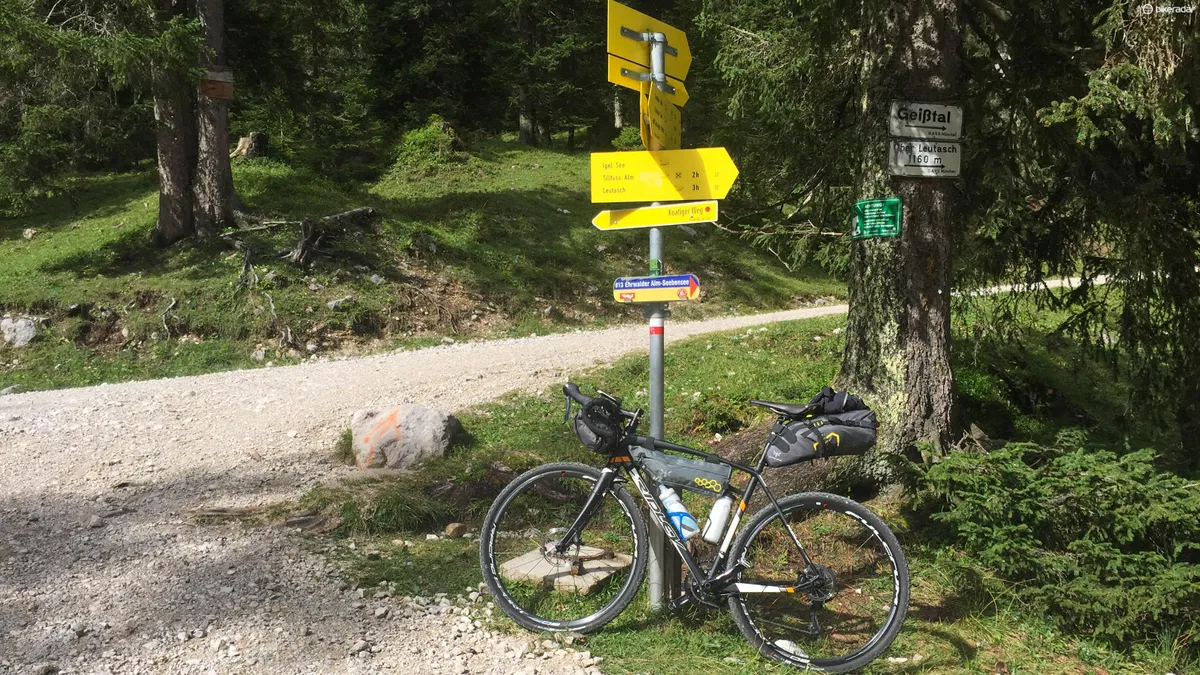
The rest of that morning was spent cycling along quiet roads through the valley, with big mountains surrounding us. So far the Ridley was performing well, the riding position was comfortable and the big 38mm tyres absorbed any minor road blemishes. Eventually we left the tarmac behind for my first experience of alpine gravel roads. They were in a good state, being regularly used for foresting it would seem, though I was getting a bit baffled by the many signs we encountered. So many choices.
The sun was starting to shine now and it felt like we were a long way from civilisation. Bliss. We skipped along gravel roads through woods, and the Ridley X-Trail responded well to being pushed harder. With small stones pinging off the downtube, I gathered speed easily and kept pace with my fully-suspended companion.
The path quickly turned into a twisty, steep tarmacked descent where we quickly dropped a few hundred metres of altitude. I had to brake very hard to make it around the corners cleanly, and the weight of me plus bags on the bike meant those hydraulic disc brakes got a good workout. Too good in fact, they started overheating, I could smell the brake pads burning.
At the bottom, I decided to wait five minutes for the whole system to cool down, and caught my breath. It sure had been a blast of a descent, but I was worried that I’d just broken my brakes. Gingerly, I set off again and tried dabbing the brakes — they now squealed like hell, but other than that they seemed to be working. I should note here that the bike came with SRAM rotors which lack the IceTec cooling technologies that Shimano rotors offer, and the brake calipers didn't have finned pads either. So it wasn't an optimum set-up for these conditions.
We ran gently downhill past a ski station and into Lermoos, found our guesthouse almost immediately, and checked in. We were just being shown to our room when the heavens opened and the rain fell so hard it bounced off the pavement outside. That was good timing. Later, we lamented the cloud covering most of Germany’s highest mountain, the Zuspitze (2,962m high), which is an incredible sight on a clear day.
Day 2: The Roman Way
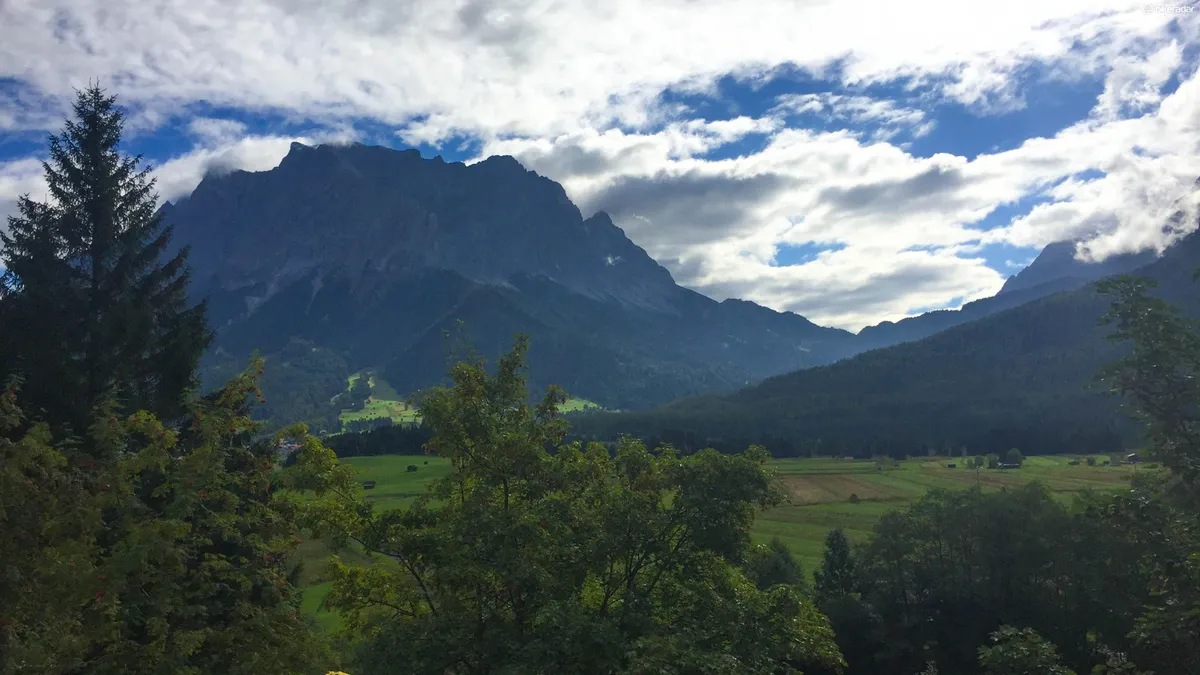
Monday dawned bright and clear: just as well because we had the first of our two major road passes to negotiate today, the Fernpaß. These can be bottlenecks for traffic, and usually present the only way through a valley for all cars, lorries and motorhomes. We swung by a supermarket for filled bread rolls, and got going. Leaving town, we realised there was a clear view to the Zugspitze, and I stopped for a quick photo.
The climb up to the Fernpaß was a long, steady 10km grind along a busy road. It wasn’t difficult physically, but it was unpleasant to be riding uphill with so much heavy traffic, especially after yesterday’s isolation. We crested the summit and could finally head downhill. It was good fun darting from corner to corner, but my brakes were still squealing badly.
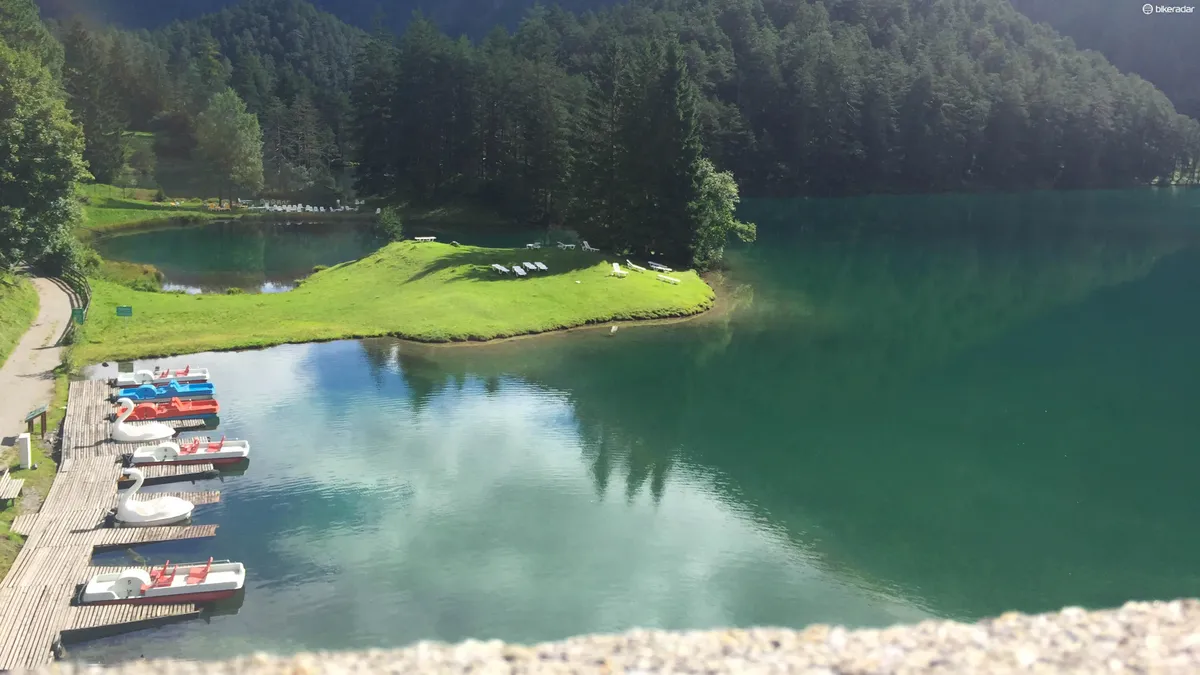
We stopped at the bottom by an emerald-green lake with rowing boats bobbing on it, and tried to fix the issue. I removed the brake pads and rubbed them with sandpaper, which seemed to improve things. I also tightened up the torx screws holding the rotor to the hub for good measure.
Other than that though, the bike was performing superbly: it was comfortable, stable and confident on all the terrain I’d encountered so far. We followed signs for the Via Augusta, an old Roman route through these mountains which has since been appropriated by the Austrian tourist office for promotion as a cycling route.
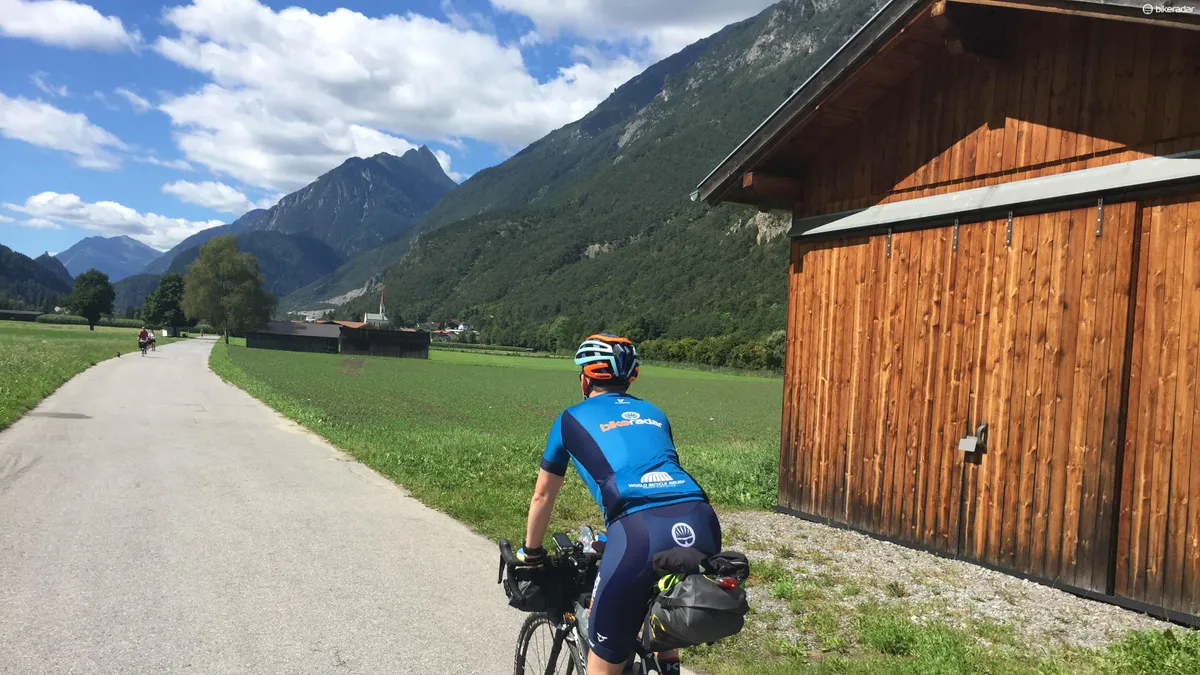
It brought us into cool pine-scented woodland, followed by rolling plains and corn fields, along with the occasional postcard-perfect village. I couldn’t help yelling and yodelling at the sheer beauty of it. We stopped for lunch by a tiny chapel in the shade of some trees and gratefully munched our sandwiches.
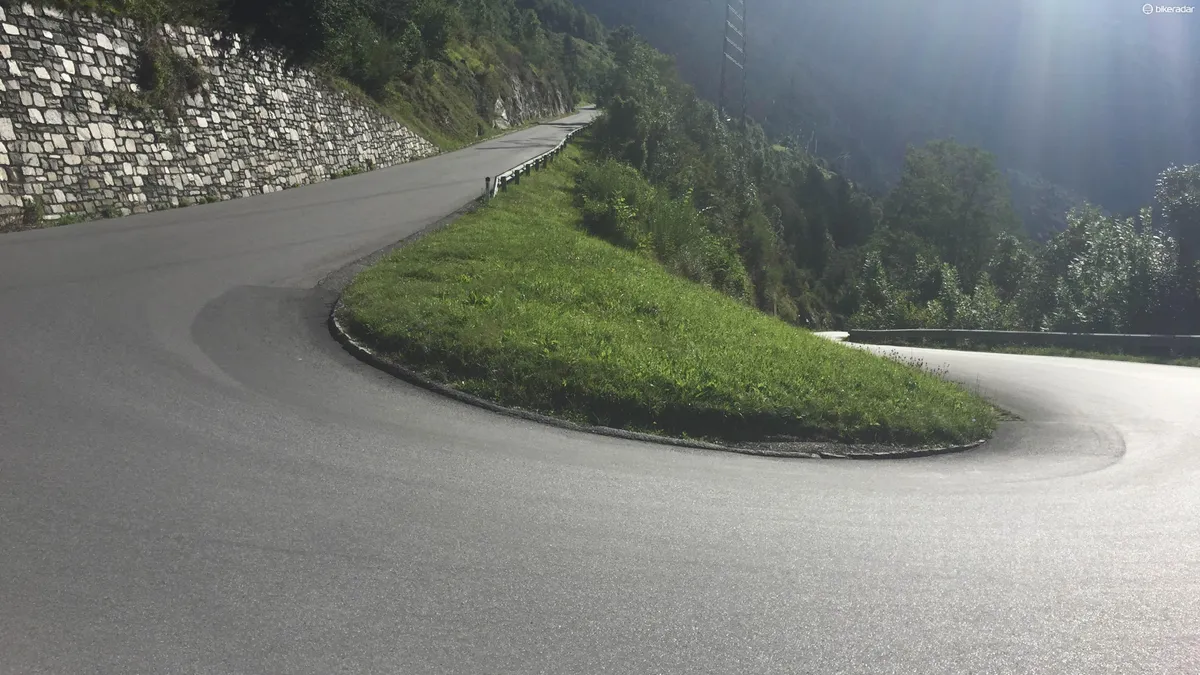
Following the river Inn south, there was another 25km or so of riding still to go, thankfully none of it too taxing. Or at least, that’s what I thought! Following signs to the village of Fieß at the end of a long day, we were faced with a long series of switchbacks, with no end in sight. This was a true test for how the bike climbed, and it felt like one of the toughest ascents I’ve ever done. Eventually, sweat pouring off me and legs aching, we made it to the top.
Day 3: Three countries in one day
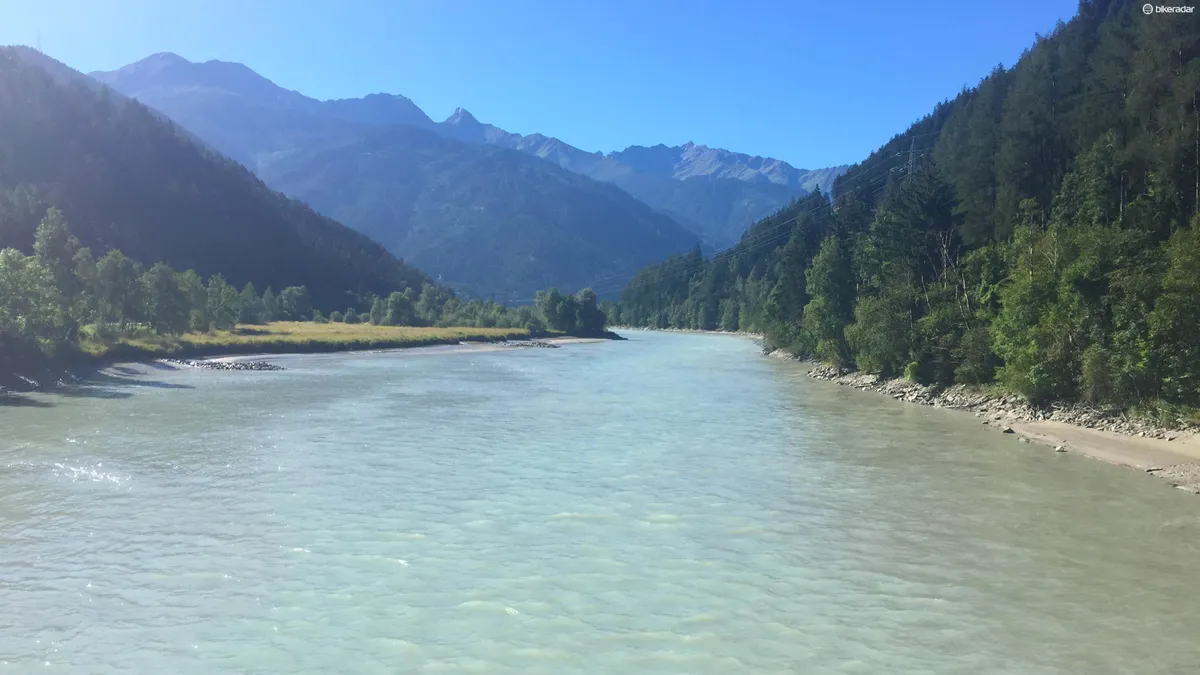
There was an excellent coffee machine at breakfast, full marks for Pension Europa. I’d already found that Apidura bags take a little longer to fit compared to panniers, but they felt balanced and secure once on, and are no harder than panniers to pack, being based on a roll-top design. We set off, back down those switchbacks. The views were unreal.
Once we’d reached the river Inn again, we encountered a bizarre optical illusion called a “gravity hill” — it looked like we were riding downhill, with steep mountains either side of us, but the river was rushing towards us. A glance at my Garmin computer confirmed we were riding up a slight 2% incline. Also known as magnetic hills or mystery hills, the illusion is created when you cannot see the horizon clearly, apparently.
Special mention must be made of the lovely town of Pfunds, which we passed through mid-morning, rattling over wooden bridges and past mediaeval squares where other touring cyclists enjoyed iced drinks in the shade. It was tempting, but we wanted to reach Italy today, via the second major pass of our trip, the Reschenpaß.
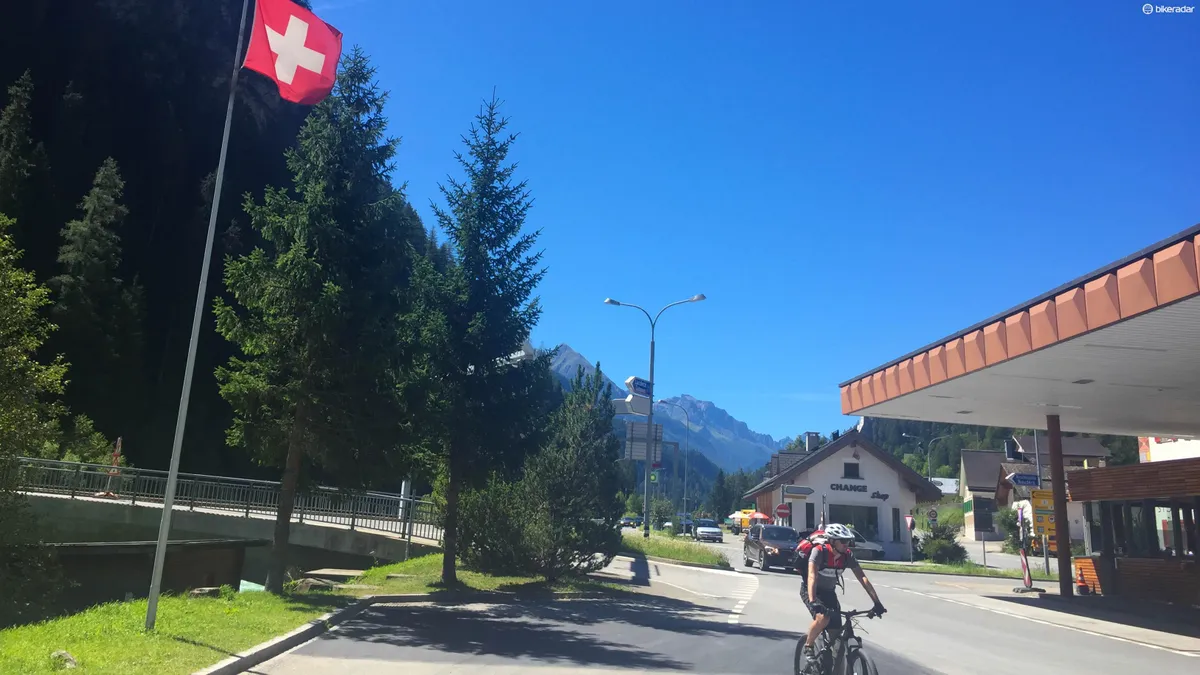
That meant we had to get back onto a busy road, through an assortment of tunnels and down long, fast descents. I found it painful to count every vertical metre we lost. We arrived at the bottom to Swiss flags and a pristine, modern border control. We cruised through — again no stopping — and found a quiet village square for lunch. It was a world away from the bustle of city life.
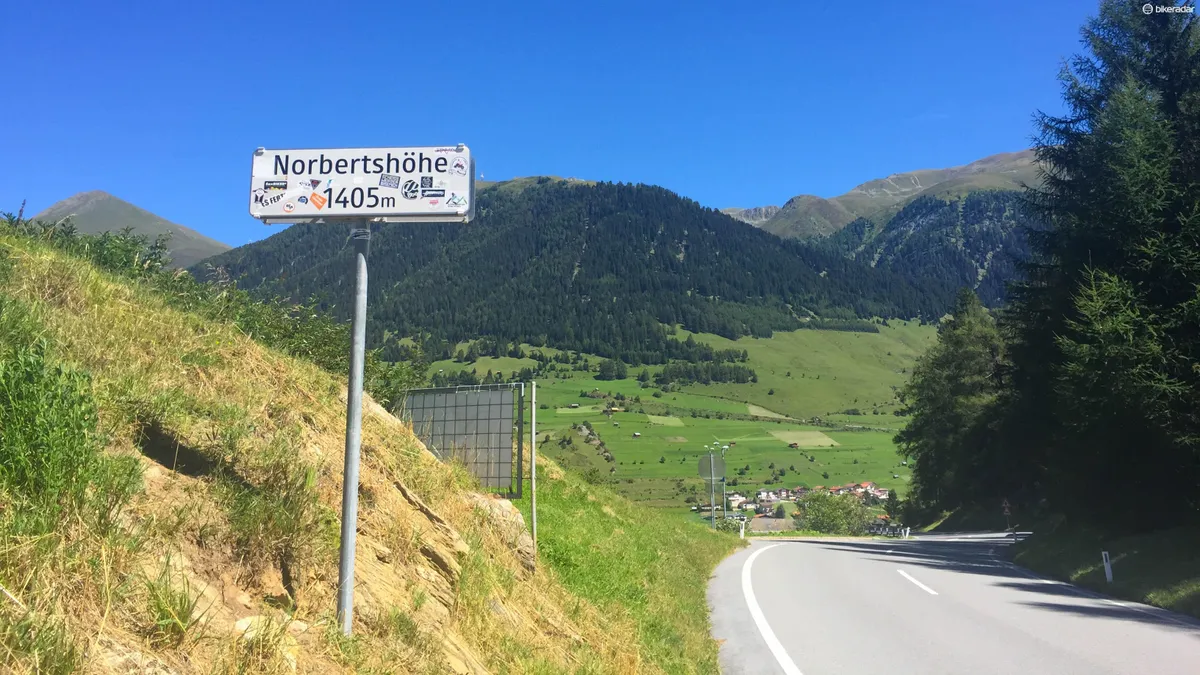
In the afternoon, we had to retrace our steps back into Austria to rejoin the climb back up the Reschenpaß. This was another big climb, around 500m of vertical ascent, weaving steadily up the mountain past pine trees. It was beautiful though, an almost meditative experience. I found myself alone with just birdsong in my ears and my own steady breathing to focus on.
The Ridley was perfect for grinding away slowly in a low gear on climbs like this, and it gave a solid, stable platform. The Fulcrum Racing wheels felt good too, they were strong and stiff no matter how hard I pushed the bike, on-road or off.
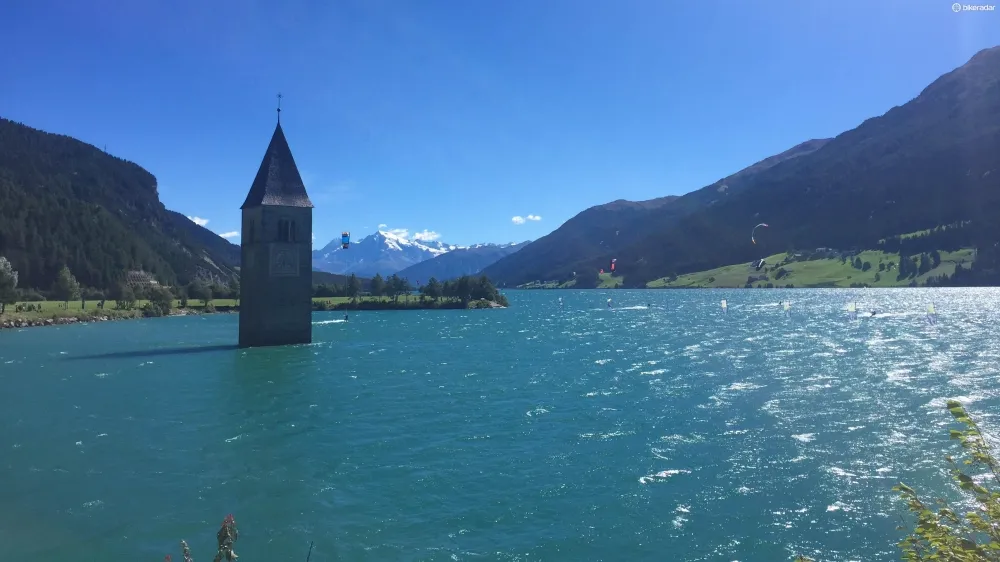
After catching our breath at the top of the climb, beaming from ear to ear at the mad exertion of it, we swooped off down the road and through the Italian border. We passed the Reschensee — ‘Lago di Resia’ in Italian — and saw the famous 14th-century church in the lake.
We finished our day in the pretty South Tyrollean village of Burgeis, drinking ice cold beers on the terrace of a posh hotel, with views of the glacier in the distance. Ace.
Day 4: The sting in the tail
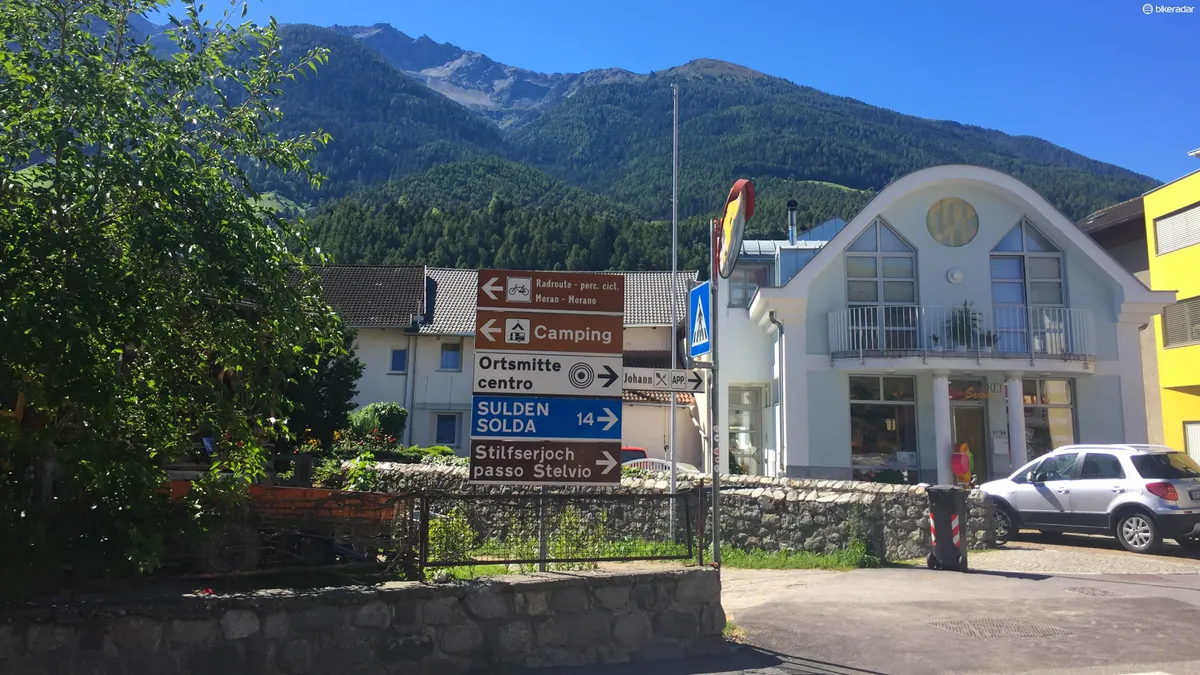
This should, at least in theory, mark the end of the tough riding: from here it was only 80km to the city of Merano, all flat and gently downhill, then another 25km or so to our end destination of Bozen, known as the “gate to the Dolomites”. We only had to follow the river Etsche and we’d get there. There were signs for the Stelvio Pass — called 'Stilfserjoch' in German — but we didn't fancy it.
By the way, these were the best cycle paths I’ve seen anywhere: they’re totally smooth with a great riding surface, a natural flow to them, stunning surroundings and excellent signposting. Someone in the local government clearly wants to encourage cycling in the region.
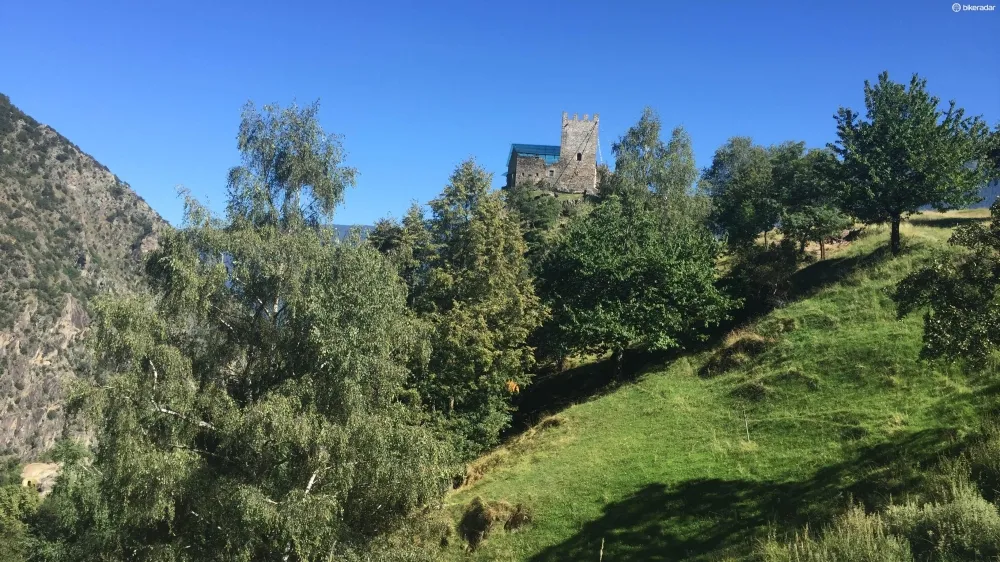
To spice things up a little, we decided to make an excursion to the hilltop summer residence of legendary mountaineer and explorer Reinhold Messner. He’s the first man to climb all 14 peaks over 8,000m, and has set up a number of museums in the region which are dedicated to mountaineering.
This was a beast of a climb: it’s only about 400m, but it averages more than 18 percent the whole way up. The sun was beating down hard on us and I quickly found I was in trouble. I stopped in the shade more than once to pour water over my head and pull myself together. By the time we reached the small cafe at the top, I was shaking from the effort. The views were superb, but unfortunately the museum was closed. Shame.
Back down we went — my brakes were still squealing again, so I took it gently and simply enjoyed the views coming down past vineyards clinging to the hill. The river Etsche stretched out into the distance towards Merano.
By this point the cycle path was pulling us gently along through gravity, just as well as I was pretty much spent. We arrived in Merano and I couldn't wait for a long, cool shower.
Day 5: Journey’s end
Breakfast is a disappointment in our guesthouse, so we quickly leave and rejoin the bike path. Big groups of club riders swoop past us: cycling is a popular pastime round these parts. We know that with just 25km more to go, the end of our journey is close. We dawdle, stopping often for photos as we leave the big mountains behind us.
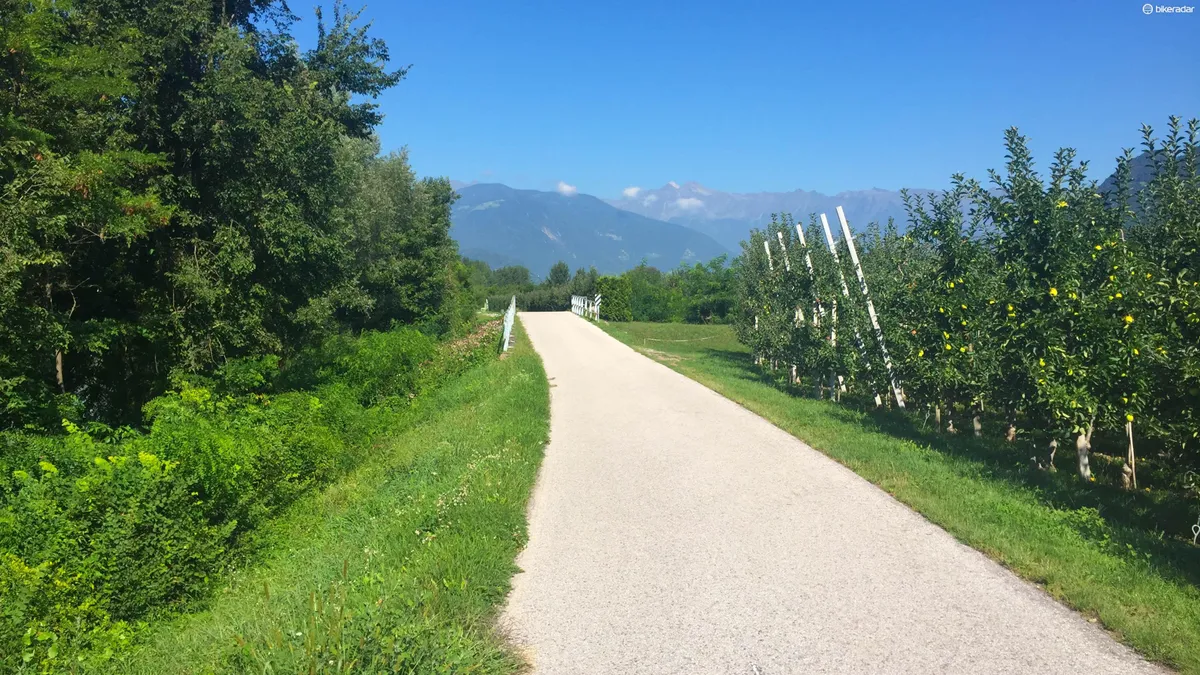
Riding past innumerable vast apple orchards covered in netting to protect them from hailstorms, it takes no time at all to arrive in Bozen. It’s a bit of a shock to find ourselves negotiating city traffic once more.
We make our way to the main square next to the cathedral of Bozen and ask a friendly looking tourist to take a photo of us both. Our journey’s over and I’m glad to say that none of the kit I was using let me down.
